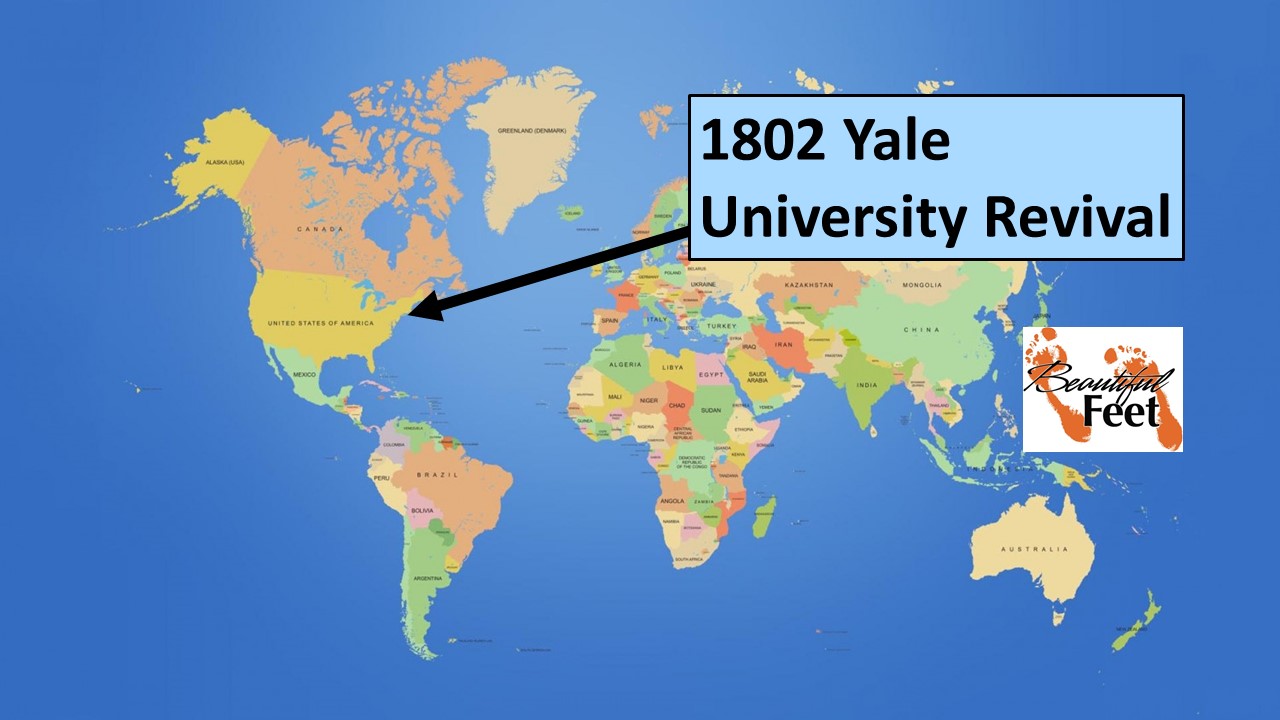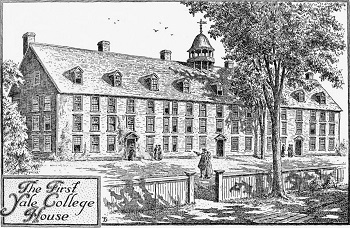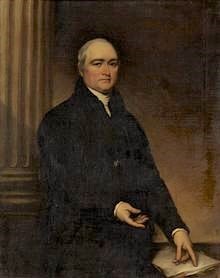

The Condition of the Nation (1780-1800)

Yale College
After the First Great Awakening the church began once again to slide toward irrelevancy.
Historian Sydney Ahlstrom, in his 1972 book A Religious History of the American People stated that
God seemed almost to have withdrawn his blessing from New England.
In the vacuum created by the Church’s weakness, groups arose that denied the basic teachings of Christianity: Universalists, Unitarians, and Deists, with their corresponding rationalistic philosophies. These forces created a widespread drift away from the Church and religious customs.
A lengthy description of the moral decay affecting the nation at that time (1780-1800) can be read on our post, Second Great Awakening.
Extraordinary Action
 Timothy Dwight, an ardent evangelical, became president of Yale University in 1795. At that time he found the student body rebellious and with a general lack of concern for their spiritual well-being. It was also clear that the majority of the students were captivated by the proliferation of rationalism.
Timothy Dwight, an ardent evangelical, became president of Yale University in 1795. At that time he found the student body rebellious and with a general lack of concern for their spiritual well-being. It was also clear that the majority of the students were captivated by the proliferation of rationalism.
Dwight began addressing the situation by leading in chapel sermons and classroom discussions. The title of one of his sermons was:
The Nature and Danger of Infidel Philosophy
It was through this type of preaching and teaching that Dwight broke down the student’s captivation with philosophies that were undermining the foundations of society. At the same time he awakened religious interest among the student body and prepared them for what was soon to take place.
What Happened

Timothy Dwight
President of Yale
1795-1817
►Early in the spring of 1802, two students were overwhelmed with conviction of their sins. In a short period of time they came to faith in Christ. This made a large impact on the other students, and it led to one-third of the student body making a commitment to Christ.
►The 1802 revival quickly spread to other colleges and soon many graduates were entering religious work (Christian ministry, education, and home and foreign missions).
►A second revival came in April, 1808, which was almost as powerful as that of 1802. Succeeding revivals came to the students in 1813 and 1815. These revivals marked only the beginning of a movement which swept Connecticut and beyond.
►Revivals recurred in a number of colleges periodically. With the student body changing every few years, the door remained open for repetitious revivals.
►The college campus revivals eventually produced a generation of ministers that served on the frontiers as the United States expanded westward.
Sources
- The Return of the Spirit: The Second Great Awakening by the Christian History Institute
- A Religious History of the American People by Sydney E. Ahlstrom
- Fire from Heaven by Robert Evans
- Revival Fire by Wesley Deuwel
- Second Great Awakening by Conservapedia
Return to List of Revival Stories
Chet & Phyllis Swearingen:
Office: (260) 920-8248
romans1015@outlook.com
Beautiful Feet
P.O. Box 915
Auburn, IN 46706

